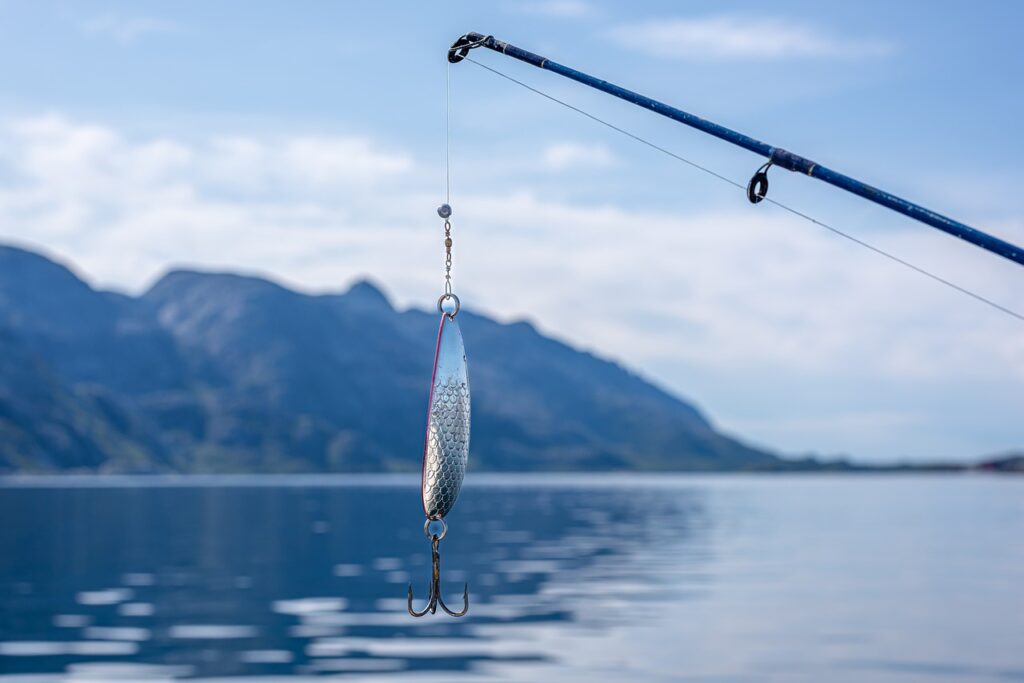In this article, you will discover everything you need to know about fishing hooks – their various sizes, types, and most importantly, when to use them. Whether you’re a seasoned angler or just starting out, understanding the intricacies of fishing hooks is essential for a successful and enjoyable fishing experience. From the different hook sizes that cater to specific fish species, to the multitude of hook types designed for various fishing techniques, this comprehensive guide will equip you with the knowledge to choose the right hook for every fishing adventure. So, let’s dive into the fascinating world of fishing hooks and unravel the secrets to hooking that prized catch!
Fishing Hook Sizes
When it comes to fishing, choosing the right hook size is crucial for a successful catch. Hook size is determined by a number system, with smaller numbers indicating larger hooks and vice versa. It’s important to understand hook size measurements and the common hook sizes and their uses. Let’s dive in and explore the world of fishing hook sizes!

Importance of Hook Size
The size of your fishing hook can greatly impact your fishing experience. Choosing the wrong size hook can lead to missed bites, hook pulls, or even the loss of a prized catch. Different fish species have different mouth sizes, so using the right hook size increases the chances of a secure hookset. Additionally, matching the hook size to your bait or lure is essential for a natural presentation, increasing the likelihood of enticing a bite.

Understanding Hook Size Measurements
Hook sizes are typically labeled with a number, which corresponds to a standardized measurement system. This system can vary slightly depending on the country or manufacturer, but it generally follows a consistent pattern. As a general rule, the larger the number, the smaller the hook, and vice versa. For example, a size 1 hook is larger than a size 8 hook. It’s important to familiarize yourself with the specific measurement system used in your country or region to ensure accurate hook selection.

Common Hook Sizes and their Uses
Now that we understand the importance of hook size and how they are measured let’s explore some common hook sizes and their specific uses:
J-Hooks
J-hooks are one of the most widely used hook types due to their simplicity and effectiveness. As the name suggests, these hooks have a distinct “J” shape. They are available in various sizes, ranging from 1/0 (largest) to size 16 (smallest). J-hooks are versatile and can be used for a wide range of fish species and fishing techniques such as bait fishing, bottom fishing, and trolling.
Circle Hooks
Circle hooks are gaining popularity among fishermen, especially for catch-and-release fishing. These hooks have a unique circular shape with the point turned inward. They are designed to hook the fish in the corner of the mouth, minimizing the chances of deep-hooking and increasing the chances of a successful release. Circle hooks are commonly used for targeting larger fish species such as catfish, tarpon, and billfish.
Treble Hooks
Treble hooks get their name from their three-point design. These hooks are commonly used in fishing lures, particularly for predatory fish such as bass, pike, and muskie. They are available in various sizes, with the larger sizes used for larger fish. Treble hooks offer increased hooking potential due to their multiple points, but they can also increase the chances of a fish becoming unhooked during the fight.
Siwash Hooks
Siwash hooks are single hooks with a long shank and an eyelet at the top. They are highly versatile and can be used in a variety of fishing scenarios. Siwash hooks are commonly used for replacing treble hooks on lures, particularly for salmon, trout, and steelhead fishing. The longer shank helps prevent fish from getting leverage to throw the hook, increasing hooking efficiency.
Aberdeen Hooks
Aberdeen hooks are characterized by their long, thin shape and a slight bend towards the point. These hooks are commonly used in freshwater fishing, especially for fish with small mouths like panfish and trout. The thin wire of Aberdeen hooks allows for quick and easy hook penetration, increasing the chance of a secure hookset. They are also great for fishing with live bait.
Bait Holder Hooks
Bait holder hooks are designed with small barbs or bumps on the shank, which help secure bait in place. These hooks are commonly used for bottom fishing or fishing with live or cut bait. The barbs or bumps on the shank prevent the bait from sliding off too easily, ensuring that it stays intact and attractive to the fish. Bait holder hooks are available in various sizes to accommodate different bait types and fish species.
Offset Hooks
Offset hooks feature an angled shank that creates a wide gap between the point and the shank. This design allows for better hooking capability, particularly when using soft plastic baits. When a fish strikes, the offset hook has more room to penetrate and secure the fish. Offset hooks are commonly used in bass fishing and for a variety of soft plastic presentations.
Drop Shot Hooks
Drop shot hooks are specifically designed for drop shot fishing, a finesse technique that is effective for targeting finicky fish such as bass, perch, and walleye. These hooks have a long shank with a small, fine wire and a turned-out eye. The turned-out eye allows the hook to hang horizontally when rigging a drop shot setup. The small size and fine wire ensure a natural presentation and improve bait action.
Octopus Hooks
Octopus hooks have a short shank with a wide gap, similar to the tentacles of an octopus, hence their name. These hooks are highly versatile and can be used for a wide range of species and fishing techniques. Octopus hooks are known for their strong hooking power and excellent holding capability. They are commonly used for both freshwater and saltwater fishing, particularly for bottom fishing and live bait fishing.
Worm Hooks
Worm hooks, as the name suggests, are specifically designed for fishing with soft plastic worms. These hooks have a wide, offset bend and a long shank to accommodate the length of the worm. The offset bend allows for effective weedless rigging, ensuring that the hook point is concealed within the body of the bait. Worm hooks are available in various sizes to match different worm sizes and fishing conditions.

When to Use Different Hook Types
Choosing the right hook type goes beyond the size and design. It’s important to consider factors such as the target species, fishing techniques, bait selection, and fishing location. Here are some factors to keep in mind when selecting the appropriate hook type:
Target Species
Different fish species have different mouth sizes and feeding habits. Consider the size of the fish you are targeting and select a hook size that matches their mouth size. Additionally, some fish species, such as catfish, prefer circle hooks, while others, such as bass, may be more effectively targeted with J-hooks or worm hooks.
Fishing Techniques
The fishing technique you intend to use also plays a key role in hook selection. For example, if you’re trolling for billfish, circle hooks are often the preferred choice due to their ability to hook the fish in the corner of the mouth. On the other hand, if you’re drop shot fishing for bass, drop shot hooks are specifically designed for this finesse technique, offering better hooking potential.
Bait Selection
The type and size of bait you’re using should also influence your hook choice. If you’re fishing with large live bait, a larger J-hook or treble hook may be necessary to effectively hook the bait. On the other hand, if you’re using small soft plastic worms, a smaller worm hook would be more appropriate.
Fishing Location
Finally, consider the fishing location and the type of water you’re fishing in. If you’re fishing in heavy cover, such as vegetation or structure, offset hooks or worm hooks with weedless rigging may be necessary to prevent snagging. In contrast, if you’re fishing in open water or targeting bottom-dwelling fish, Aberdeen hooks or bait holder hooks may be more suitable.
In conclusion, choosing the right hook size and type is essential to maximize your fishing success. Understanding hook size measurements and the characteristics of different hook types allows you to make informed decisions based on the target species, fishing techniques, bait selection, and fishing location. So next time you head out on your fishing adventure, be sure to consider the nuances of fishing hook sizes and types – it could make all the difference for a memorable and fruitful fishing experience!






